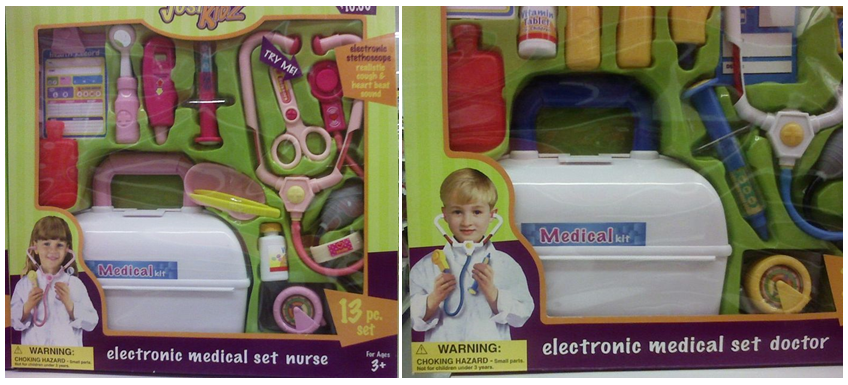Imagine that you are 12 years old. You’ve just run home from the bus stop, dashed past your parents waiting for a hello, and leapt into the couch while making a grab for the remote. You tune out the scolding from your parents about politeness and jumping on the furniture and punch in the numbers for Nickelodeon and are just in time for your favorite afternoon special.
Ignoring the fact that kids today have the ability to record their favorite programs, this is an image probably familiar to many of you from your own childhoods. Maybe you preferred Cartoon Network over Nick, or you were an avid devotee of Saturday morning cartoons but the image is none the less familiar. Another familiar image probably is the advertisements that came along with your favorite shows. Ads for the latest toys, books, clothes and other television shows penetrate the breaks in whatever you are watching to sell you, or rather convince you to make your parents buy you the next great thing.
Gendered advertising has been around for awhile now. Companies use gender in order to sell the same product twice, once to men and then again to women. Multiplying sales mean that they get more money, but what does this mean for children’s advertising? Kids are often smarter than we realize, but are they able to recognize that they are being manipulated into gender roles that may leave a lasting impression on their psyche by advertisers for the sole purpose of companies selling more toys? Or if they are able to recognize it, can those same children resist the boundaries put up by advertisers for their entire childhood into adolescence and adult life?
The answer to that is complicated. Every child is different, they are raised by different parents, and are given differing values by relatives, teachers, and members of their communities. While some children have been raised to recognize and actively resist gender stereotypes in advertising, others my ave parents who either don’t recognize this as an issue, don’t care, or may recognize the problem, but lack the time to talk about it.
Things are getting better. Recently in the UK, regulatory acts were passed that banned the use of gendered stereotypes in advertising due to fears that it could influence children negatively as they grow up. While these regulations only apply to the United Kingdom, in an increasingly global society it is easy, if perhaps a bit optimistic, to imaging these regulations causing a a domino affect within the advertising industry.



